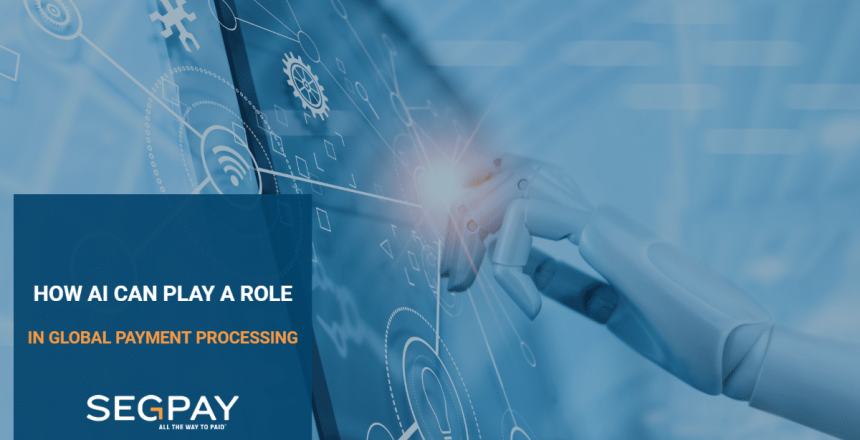Key Takeaways
- Artificial intelligence is a game-changing technology in payment processing, offering enhanced security, efficiency, and decision-making abilities.
- With AI, the payments industry can detect fraud, assess risks, improve customer experience, and optimize payments.
- Every industry must implement AI carefully based on issues of privacy and security, as well as ethical considerations.
- 5 minute read
Payment processing is the spine of the world economy. It enables businesses and consumers to transfer funds easily and securely. The number and intricacy of transactions in the global market are rising by the day.
Thankfully, there are technological advancements that have revolutionized the way we pay. Artificial intelligence (AI) has emerged as the revolutionary of payment processing. Coveted and—unfortunately—still feared by many, AI offers many plus points for businesses and consumers alike.
The advantages of artificial intelligence in payment technology are many: it offers enhanced security, efficiency, and decision-making capabilities.
With AI boosting payment processors, transactions can be completed in real-time. Businesses can now manage their cash flow better and reconcile transactions faster.
Learn more in this article about how AI plays a significant role in global payment processing.
The Role of AI in Payment Processing
At its core, payment processing refers to the various steps involved in authorizing, capturing, and settling financial transactions between merchants and customers.
There are numerous benefits of using AI in payments industry. Speed and accuracy are only the beginning. Automation is another step further toward progress. With so many benefits, it’s not surprising at all that everyone races to see AI’s role in payment processing.
Payment fraud detection machine learning and prevention systems
In today’s world, keeping financial transactions secure and ensuring compliance with regulations is challenging. There is an upsurge in the number of digital transactions happening in the world. Yet, fraudsters continue to develop more complex techniques.
Thus, having enhanced fraud detection and prevention systems in place is crucial.
One of the ways to enhance this detection is through AI’s capacity for advanced analytics and machine learning. These technologies can be used to identify patterns in transaction data that could not be detected using traditional methods.
Engaging AI risk assessment tools
Another way to up the ante on fraud detection and prevention systems is through the use of real-time monitoring and risk assessment.
With this, banks and financial institutions can identify and act on suspicious activity as it happens. This can include flagging transactions from high-risk countries or users with a history of fraudulent transactions.
Additionally, real-time risk assessment can be used to analyze user behavior and identify anomalies that could indicate potential fraud.
AI detects fraudulent user behavior by analyzing its geolocation and transaction history. Again, machine learning and analytics will detect risks by reading the data.
Contributing to excellent customer support
AI has improved customer experience and satisfaction in many ways. Chatbots are a common application of AI used in customer service. They can assist customers with basic inquiries and provide information.
Virtual assistants, too, can answer customer queries promptly, leading to a better customer experience.
Meanwhile, the regular customer service staff will have more time to handle complex issues needing human intervention.
Personalizing the customer experience
AI-powered systems also contribute by personalizing the customer experience. They can analyze customer transaction history and behavior to give customers personalized service or product recommendations.
This is accomplished via automated systems providing deep insights into client behavior and preferences. Later, these insights will drive targeted marketing campaigns, churning out personalized recommendations.
That personalization based on customer preferences and purchase history will no doubt enhance the rates for customer retention.
Reading the market through predictive analytics
Customers expect a seamless experience in the financial industry, retail sector, or anywhere else. Enter AI’s ability through predictive analytics that read the market by analyzing consumer behavior.
Anticipating customer needs
Business owners will learn much about the market through predictive analysis that uses machine learning and other advanced analytics techniques. They handle large amounts of data to recognize trends and patterns.
Therefore, businesses can forecast their customer demands and modify their offerings accordingly.
For example, predictive analysis allows a financial institution to identify customers who are likely to need a home loan in the near future. The institution will then offer a pre-approved loan or tailored communication.
Or, a retail company can analyze customer data to determine which services or products are likely to be in demand during a particular period. Then, the retailers can adjust their inventory accordingly.
Preventing problems or concerns
Another way that predictive analysis can read the market is by identifying patterns in customer behavior that may indicate problems or concerns.
For instance, a credit card company can analyze transaction data to identify trends indicating fraudulent activity. By detecting fraud early on, they can prevent unauthorized charges and provide a more secure experience for their customers.
Optimizing payments through Robotic Process Automation
Robotic process automation, simply put, streamlines any operation. From assembling a car to processing a digital payment method, RPA uses robots to automate repetitive tasks. This automation leads to reduced timelines, increased efficiency, and—the best of all—saved costs.
RPA brings about payment optimization by increasing accuracy and speed to accelerate processes. The software robot can perform repetitive tasks much faster than a human, with a significantly lower error rate.
For example, with RPA, online transactions pick up speed and avoid miscalculations. Payment routes are optimized to reduce costs. There’s a shorter processing time with a higher success rate. It results in general customer satisfaction.
RPA benefits humans, too. There will be no more humans performing tedious tasks. Employees can now work on more strategic, challenging, and rewarding tasks. Job satisfaction improves, and the company’s retention rates do as well.
Ensuring compliance with regulations and security protocols
Safe and legal transactions can only be guaranteed in payment processing by regulations and security protocols. Failure to meet these requirements can result in several disasters. Expensive fines and legal penalties are only the beginning. The worst that can happen is reputational damage.
One way that AI can help ensure compliance with regulations is by constantly monitoring and analyzing transaction data to identify any potential violations.
This can include detecting irregular patterns that may suggest fraudulent activity or identifying transactions that exceed legal limits.
AI also allows businesses to enforce robust security protocols that protect the safety and security of customer data. Technologies like RPA automate tasks, such as data entry and validation. This automation lowers human error risk and minimizes the potential of data breaches.
Moreover, machine learning algorithms can be used to identify suspicious activity. Unauthorized logins, for example, can lead to data losses. Or attempts to access sensitive data will be detrimental to building customer trust.
So early detection of these activities will make it easier to take immediate action and shut down the potential threats.
Final Thoughts on AI in Payment Processing
Payment processing relies on a complex network of technologies and systems that involves payment gateways and security protocols to ensure swift and secure transactions.
Hence, payment processors must also comply with various regulations. These regulations are not meant to restrict businesses or consumers.
Instead, it’s to protect them from harmful acts like money laundering or data breaches.
The same goes for AI implementation. There’s currently no global governing body for artificial intelligence. Each country still manages AI technologies individually, although an international regulatory body has been suggested.
So each country must carefully consider privacy issues, data security, and ethical implications of AI on their own.
The faster a uniform set of regulations can come, the better. The global economy is growing more digital and interconnected; payment processing is now more important than ever.
Almost every organization, from small businesses to multinational corporations, relies on payment processing to facilitate transactions and grow their business.
There’s no stopping this interconnectivity. And there’s no stopping artificial intelligence. With careful planning, the two matters can work together and boost the world’s economy.
Want to learn more about AI in Payment Processing?
Contact us today, we’d love to chat with you



